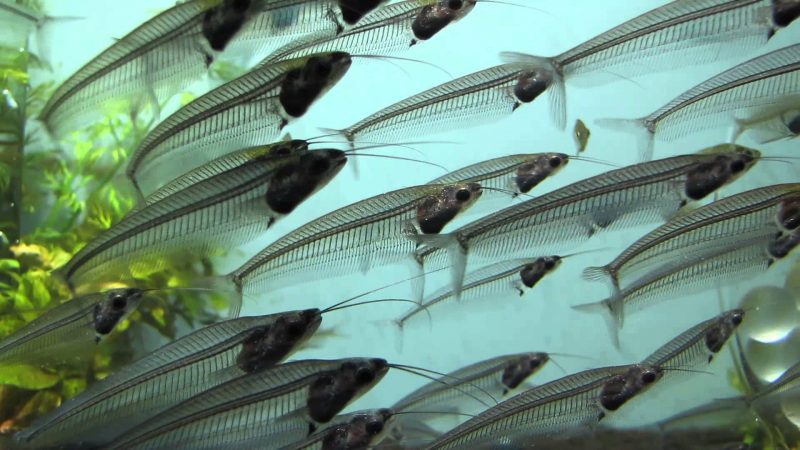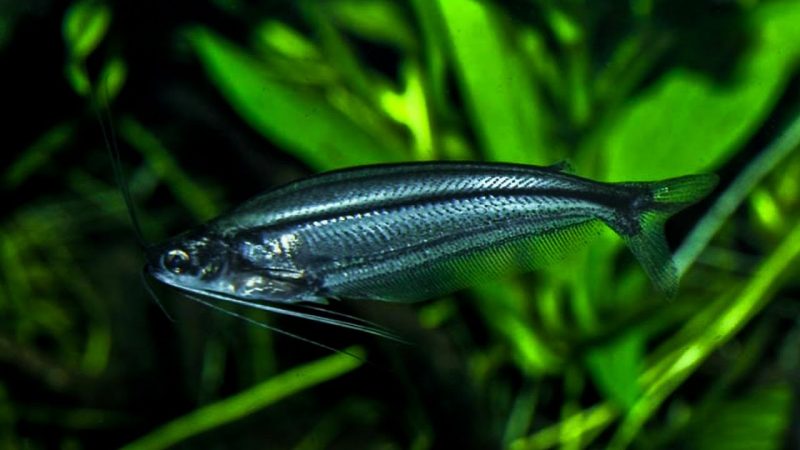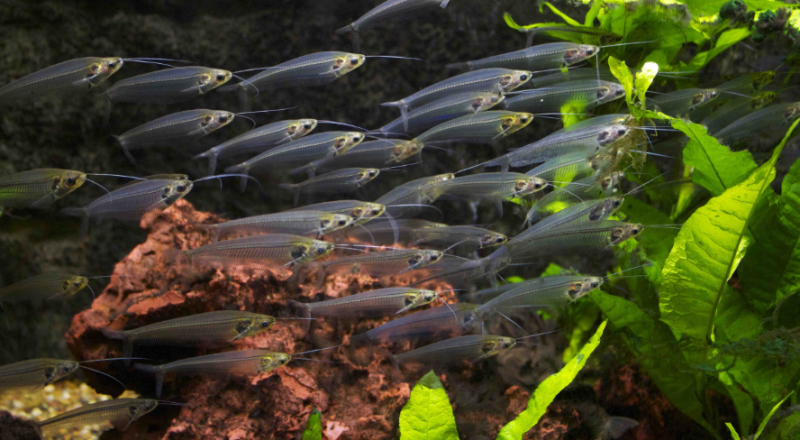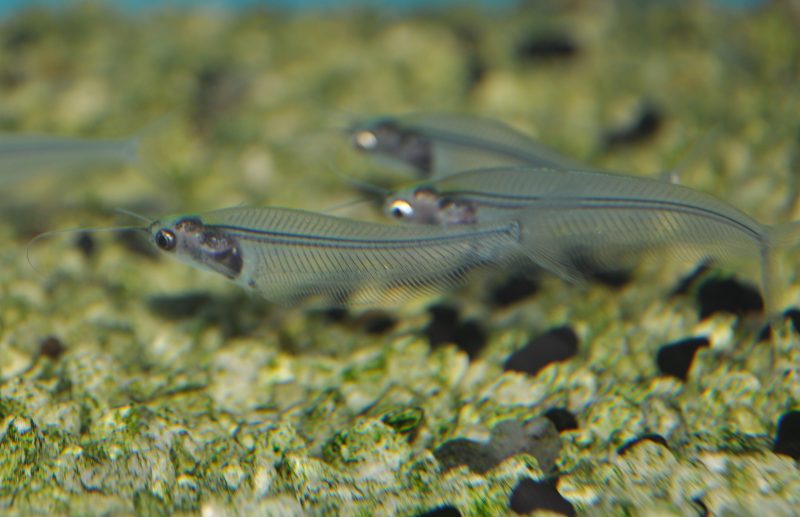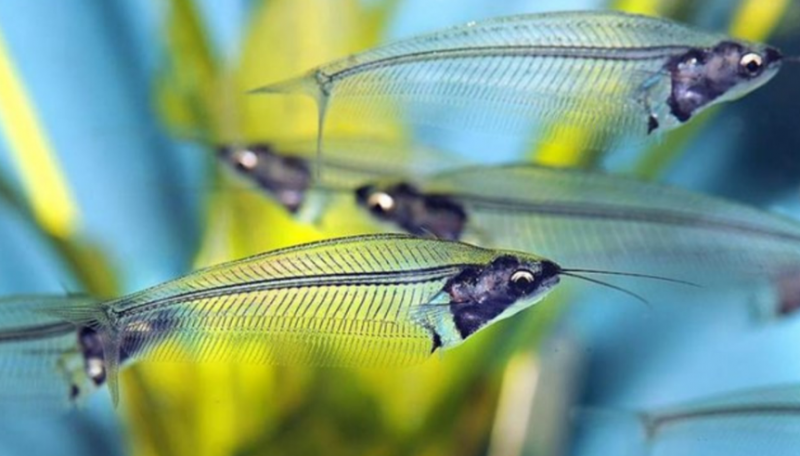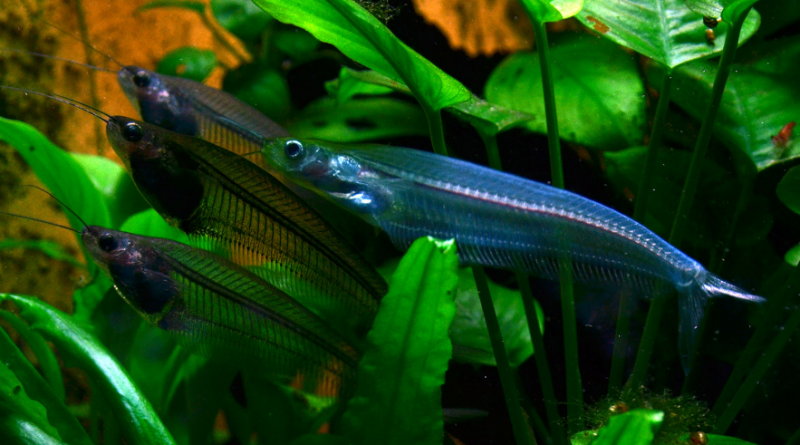Glass catfish (bicuspid Indian glass catfish): description of the type of aquarium fish, maintenance and care
Glass catfish (Kryptopterus Bicirrhis) is a representative of one of the varieties of bottom fish. He got this name because of the specific structure of the body and color, which resemble a transparent glass. The second name is Indian bicentenary, selected based on the habitat of this representative of the catfish and its pair of antennae.
Material Content:
The history of the origin of glass catfish
Breeding glass catfish in captivity is considered a complex and time-consuming process, so it is rare for any aquarist to take it. It is only specialists in fish farms in the homeland of this animal in Southeast Asia (Sumatra, Borneo, Malay Peninsula, Thailand, Java, Kalimantan) can create conditions that will be as natural as possible. There, along the banks of the basins of such rivers as Chao Phraya or Mekong, this glass fish took root and settled for a long time, because the local conditions are just right: temperature (21º-26 ºC), muddy water, fast flow.
Despite all the difficulties, nevertheless, one Soviet professional undertook to reproduce the native situation for the catfish and began to breed them. This craftsman was Mikhail Timofeevich Likhachev, a Muscovite. He managed to get a productive spawning of this fish, moreover, he repeated the success repeatedly. The eggs were swept in sufficient quantities - about 100-250 pieces.Due to weak stickiness, the transparent caviar immediately sank at the bottom, where it remained for about two days. At a temperature of 28 ºC, fry appeared from it after 4-5 days, which soon already successfully floated along the bottom. Two weeks later, they became full-fledged individuals and cruised throughout the aquarium.
Description of the type of aquarium fish
The appearance of these fish is somewhat different from representatives of the same family. They have an elongated long body, which can reach 10-15 cm in nature and up to 8 cm in artificial conditions. The dorsal fin of these fish is very small. It is located immediately behind the head and is most often pressed to the body. Aquarium glass catfish has a specific color due to lack of pigment. It is almost all transparent, with the exception of the head and some organs. The latter have a grayish metallic shade, which varies depending on the lighting.
A feature of this type is a pair of long whiskers located on the head. With their help, catfish find food, that is, it is such an organ of touch. Like most aquarium inhabitants, females are larger and thicker than males. But it will only be possible to accurately determine their gender after full maturity. What is remarkable ghost catfish - schooling fish that feels more comfortable in the team than in solitude.
Life span
Life expectancy is one of the most important criteria when choosing the type of fish. Large representatives of the Somoids order are able to survive in natural conditions even a hundred years, but small individuals are several times smaller. The maximum life span of an Indian bipedal catfish is 8 years, but this is only under ideal circumstances and suitable conditions.
The following factors affect the age of glass catfish:
- aquarium size;
- water quality;
- feed quality;
- general atmosphere in the aquarium and neighbors;
- proper care.
For many, it will be a discovery that the displacement of a can (aquarium) also becomes a criterion that affects the life of a fish. This dependence is explained by the fact that in small aquariums there is an increased level of nitrates, which negatively affects health and, accordingly, shortens the eyelid. It is desirable to contain a ghost catfish in an aquarium with a capacity of at least 80 liters.
Oddly enough, even the mood of the fish is important for longevity. And also, if it is wrong to choose neighbors who will constantly oppress and offend calm catfish, then you can observe frequent diseases against the background of weak immunity.
The correct conditions of detention
Glass catfish is not a problem fish. It does not require special conditions, but still some points are worth considering. A comfortable temperature range for him is the range from 23 ºC to 26 ºC, but for some time he can hold out even at high summer temperatures up to 30ºC. Not picking Indian catfish on the chemical composition of water, it is enough to just keep its standard characteristics (dH 6-12 °, pH 5.7-7.2) and change one fifth of it once a week.
As for lighting, glass catfish loves scattered rays. Particular attention should be paid to this: pick up a lot of dense plants, including floating ones, so that the light becomes more subdued. You also need to look for several snags and decorations for the aquarium, because this aquarium fish loves to hide in shelters. Owners of this resident should pay attention to such important points as aeration and filtration. A stream of air will create a flow in the aquarium, which will become an imitation of the natural habitat of these beauties.
Care for a two-armed Indian glass catfish
The Indian catfish does not require any special manipulations. This fish is quite resistant to changes in the characteristics of water, temperature and disease. If you arrange comfortable living conditions for them, then most likely these inhabitants of the aquarium will not cause any problems to the owners. The only thing that is important to observe in caring for catfish is proper feeding.He, like other fish, does not tolerate overeating. Pour food one, maximum two times a day. The amount of feed should be such that the fish can eat it in five minutes. Overfeeding is fatal.
The diet of Indian glass catfish includes almost all of the same components as other fish, these are:
- Shrimp
- granules;
- pills;
- frozen food;
- dry food;
- cereals;
- live food (daphnia, bloodworm).
It is not worth worrying about malnutrition of catfish, because they can collect leftover food from the bottom, which other fish rarely do. That is why they are sometimes called "orderlies".
Compatible with other fish
The two-armed Indian glass catfish is a peaceful harmless fish, which is recommended to be settled with the same neighbors.
The main thing is not to place large aggressive fish in the same aquarium with a two-armed catfish: they can harm it by biting and chasing.
And the catfish itself can neither stand up for itself nor harm other fish. It is very difficult to choose according to this principle, because there are a huge number of peaceful fish. You can give preference to those species that outwardly in color and size go well with glass catfish.
These include:
- cuneiform parsing;
- red neon;
- rhodostomus;
- honey gourami;
- Apistogram Razmirezi (cichlid);
- catfish changeling.
But despite the harmlessness of this fish, there are creatures that are not so safe to keep near it. The only ones who may suffer from the presence of an Indian ghost catfish in the neighborhood are shrimps and fry. The first are included in his diet, and the second he can simply mix up with food due to the small size.
Features of reproduction, gender differences
It is extremely difficult to determine the gender of a bipedal Indian catfish. Sexual characteristics as such do not exist. It is only possible with time to calculate the females by their large size and calmer character. To breed glass catfish at home is very difficult. They are accustomed to reproduce only in the natural environment, where everything corresponds to their characteristics. The specialists of Far Eastern fish farms in the homeland of Indian catfish succeeded artificially in achieving success.
Their mating season begins in the rainy season, so reproducing this process on their own is extremely difficult. First you need to lower the temperature in the aquarium by several degrees, drain half of the water and stimulate reproduction, feeding the fish a considerable amount of live food. If spawning is successful, producers need to be jailed. Females prefer to lay eggs on plant leaves. Appeared babies are fed with encapsulated artemia, dust or finely chopped bloodworms. Be sure to make sure that older individuals do not eat fry.
Common fish diseases
Like any other pet, such a transparent fish, like glass catfish, is also susceptible to disease. As a rule, they are infusorian in nature.
You can determine the ailment of a resident of the aquarium by the following signs:
- poor appetite;
- the presence of spots;
- the presence of turbidity;
- color change;
- unusual behavior;
- unusual movements.
Having discovered such changes in a fish, it is worth placing it in quarantine. To do this, you need to organize a separate container for it. Most often it becomes a clean jar. If possible, you need to organize the catfish familiar conditions: water from the aquarium, suitable temperature, the presence of a filter and aerator. Such measures will help protect neighbors from infection. For treatment, drugs such as Metrogil, Metronidazole and Linkomycin are used. The first two are calculated in the ratio of 100 ml of the drug per 100 liters of water. The third medicine for the same volume requires the introduction of 1 ampoule. You can still use ericycline. It is diluted in a dosage of 70-150 ml per 1 liter of water.
Glass Indian catfish is a beautiful and unusual fish. Providing her with appropriate conditions, the aquarist will be able to enjoy her for many years.


